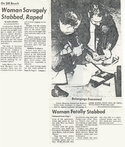Therapeutic Forgetting: The Legal and Ethical Implications of Memory Dampening
INTRODUCTION
Suppose we could erase memories we no longer wish to keep. In such a world, the victim of a terrifying assault could wipe away memories of the incident and be free of the nightmares that such memories often cause. Some memories, however, even quite unpleasant ones, are extremely valuable to society and ought not be eliminated without due consideration. An assault victim who hastily erases memory of a crime may thereby impede the investigation and prosecution of the perpetrator. In a world with memory erasure, our individual interest in controlling our memories may conflict with society’s interest in maintaining access to those memories.1 While true memory erasure is still the domain of science fiction,2 less dramatic means of dampening the strength of a memory may have already been developed. Some experiments suggest that propranolol, an FDA-approved drug, can dull the emotional...

